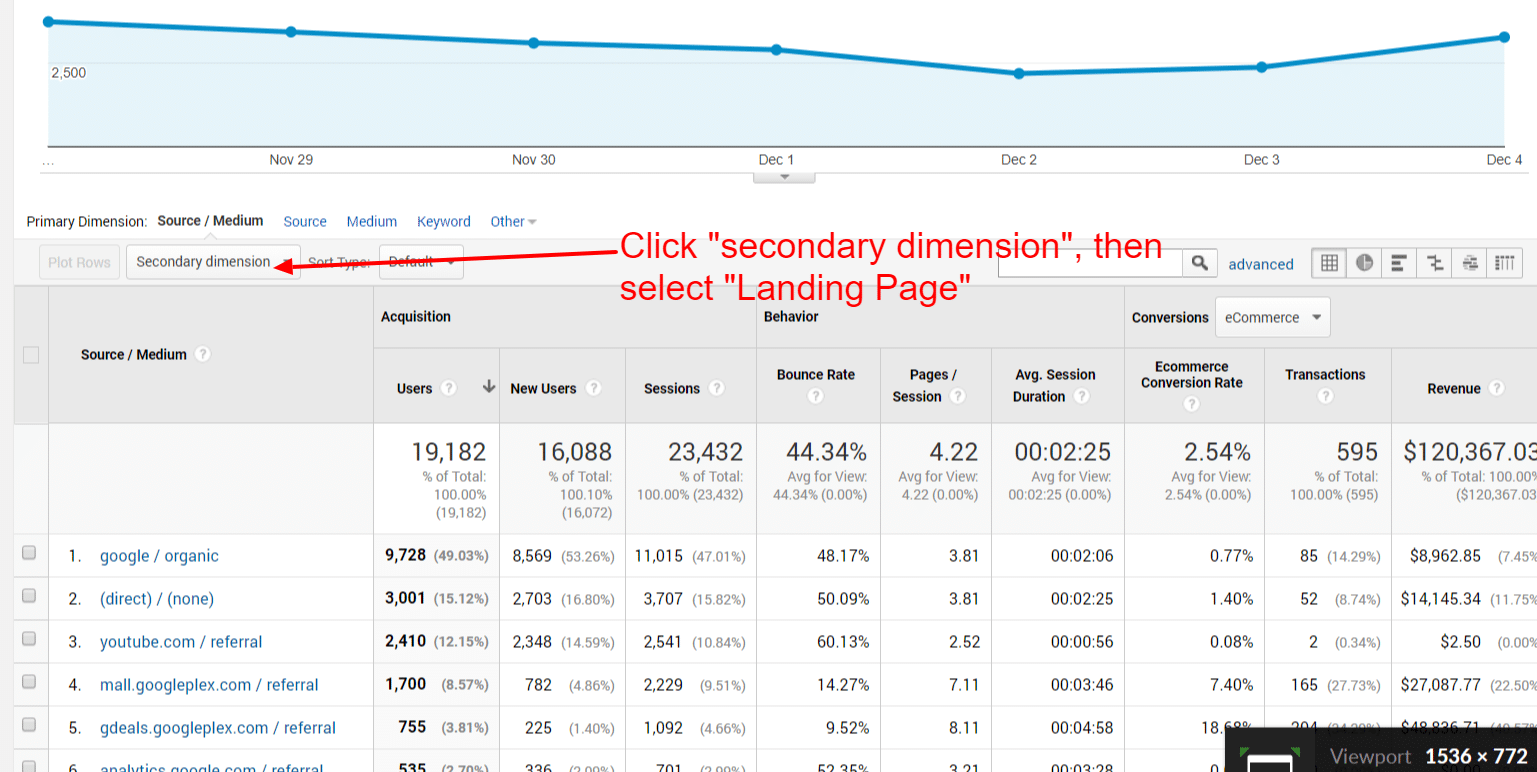Secondary Dimension in Google Analytics: Finest Practices and Tips
Secondary Dimension in Google Analytics: Finest Practices and Tips
Blog Article
Enhance Your Data Analysis Utilizing Additional Dimension in Google Analytics
Checking out the capabilities of secondary dimensions in Google Analytics opens up a realm of possibilities for refining information evaluation. By layering additional measurements onto main information sets, a more intricate story arises, dropping light on customer communications and efficiency indications.
Understanding Secondary Dimensions
Additional measurements in Google Analytics refer to additional criteria that can be added to the main dimension, enabling for a more comprehensive analysis of information (Secondary Dimension in Google Analytics). By integrating additional measurements, experts can segment and filter information to uncover patterns, trends, and connections that may not be apparent when looking at the information as a whole.

Advantages of Utilizing Additional Measurements
When evaluating information in Google Analytics, the utilization of second measurements uses important understandings into customer habits and efficiency metrics. By including a secondary dimension to your key data, you can delve much deeper into the characteristics of your internet site site visitors and their interactions.
Additionally, second measurements assist in recognizing patterns and relationships that might not be promptly noticeable when taking a look at the information alone. This much deeper degree of analysis can reveal beneficial details that can assist advertising methods, site optimization, and general service decisions. Furthermore, secondary dimensions boost the context of your main information, providing a more detailed view of user interaction and efficiency metrics. Overall, the use of second dimensions in Google Analytics can dramatically enhance the depth and high quality of your data evaluation, leading to even more enlightened decision-making and enhanced end results.
Just How to Include Second Dimensions
By integrating additional measurements in Google Analytics, customers can acquire deeper understandings right into their data evaluation procedure, permitting more extensive examination of customer actions and performance metrics. Including secondary dimensions is a straightforward process that can dramatically boost the depth of analysis. To include an additional dimension in Google Analytics, begin by browsing to the record you intend to evaluate. Once in the report, find the "Secondary dimension" tab over the data table. Click on it to reveal a dropdown food selection with numerous options such as Actions, Modern Technology, and Customized Dimensions. Select the measurement you want to include, such as 'Source/Medium' or 'Tool Classification'. This get more second dimension will certainly after that be put on your existing data, giving extra context and enabling a more in-depth evaluation of user interactions. By making use of additional dimensions properly, customers can discover valuable understandings that may have or else been ignored, causing informed decision-making and enhanced performance methods.
Studying Information With Additional Measurements
Using second measurements in data analysis supplies a more thorough understanding of individual more helpful hints actions and efficiency metrics. By adding a second measurement to your primary data established in Google Analytics, you can delve deeper into the characteristics of your web site visitors and their interactions. Incorporating the main dimension of 'source/medium' with the secondary dimension of 'touchdown page' can disclose which certain pages are attracting website traffic from different sources, helping you optimize these web pages for much better interaction.

In essence, assessing information with additional measurements equips you to acquire useful understandings right into individual behavior, determine patterns, and make notified choices to improve the performance of your digital residential or commercial properties.
Finest Practices for Secondary Measurements
In data analysis, incorporating additional measurements efficiently can considerably enhance the deepness of insights stemmed from metrics and individual actions patterns. When using second dimensions in Google Analytics or any kind of various other analytical tool, it is essential to follow finest techniques to make sure the precision and relevance of the data analysis.
One trick finest technique is to very carefully look at these guys select secondary measurements that match the primary measurement being evaluated. Selecting additional dimensions that offer added context or more division can offer a much more extensive understanding of the data. It is also crucial to avoid overcomplicating the analysis by consisting of way too many second measurements, which may bring about complication or dilution of understandings.
In addition, it is suggested to explore various combinations of key and additional measurements to discover brand-new relationships and fads. Regularly fine-tuning the selection and examining of second dimensions based on the details goals of the analysis can cause even more actionable understandings. By following these best techniques, data experts can take advantage of second dimensions successfully to boost the general information analysis procedure and decision-making capacities.

Verdict
To conclude, integrating additional dimensions in Google Analytics is necessary for a comprehensive data evaluation approach. By leveraging second dimensions along with key ones, analysts and marketing experts can reveal useful insights and relationships that can notify decision-making and maximize electronic advertising and marketing methods. Comprehending just how to effectively utilize additional dimensions and following best techniques will certainly allow specialists to remove significant information and boost their general efficiency metrics.
Second dimensions in Google Analytics refer to added specifications that can be added to the primary dimension, enabling for a more comprehensive analysis of data. By integrating secondary dimensions, analysts can sector and filter information to reveal patterns, fads, and connections that may not be apparent when looking at the data as a whole. Combining the key dimension of 'source/medium' with the secondary dimension of 'touchdown web page' can expose which details pages are drawing in website traffic from different resources, helping you enhance these pages for far better engagement.
One secret finest method is to very carefully select secondary measurements that enhance the primary dimension being evaluated. By complying with these finest practices, information analysts can utilize additional dimensions properly to improve the overall information evaluation process and decision-making capacities.
Report this page